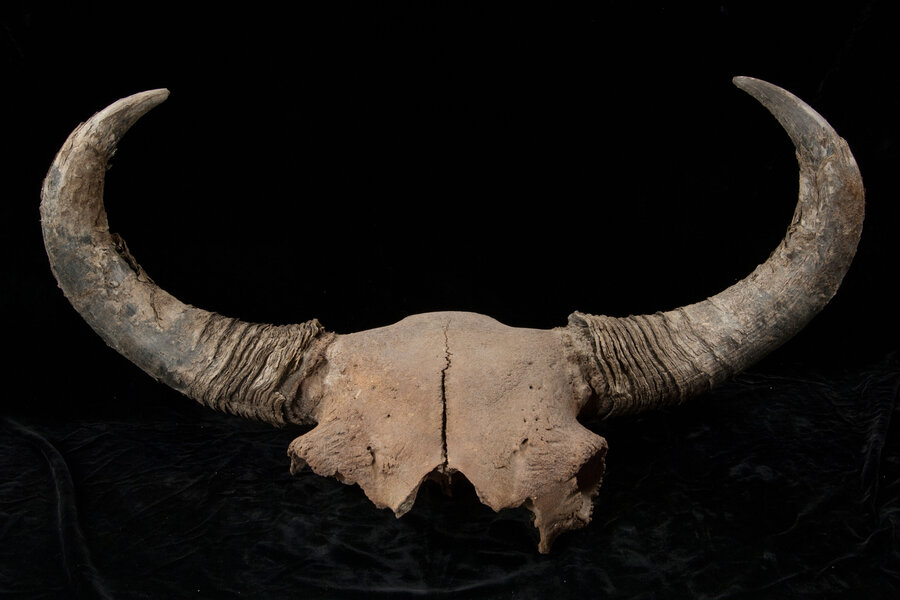What can bison fossils teach us about the original American migrants?
Loading...
An ice-free corridor through the Rocky Mountains once thought to be humanity's path to the Americas from Alaska did not open in time to be the access route to the Americas, according to researchers who studied fossil samples of bison.
Using radiocarbon dating and DNA analysis, the researchers tracked the movements of bison into the corridor and determined it was fully open about 13,000 years ago, according to a press release from the University of California, Santa Cruz, where some of the researchers are based. [Editor's note: An earlier version of this story misstated the name of the university. The Monitor regrets the error.]
The research suggests the Americas were likely colonized from Alaska through a coastal route on the Pacific instead. Peter Heintzman, one of the researchers, told the Guardian that after years of contention, the study shows the Pacific route as the most likely.
"It’s really hard to think of any other ideas," Dr. Heintzman told the Guardian, pointing out that, 14,000 to 15,000 years ago, there was still quite a lot of ice. "And if that wasn’t opened up you’d have to go around the ice, and going the coastal route is the simplest explanation."
Other experts agreed. Michael Waters, an archaeologist at Texas A&M University, College Station who was not involved in the study, told Science magazine the evidence, while indirect, is strong.
"This is the first strong empirical data indicating when that corridor was viable," he said.
The earliest evidence of humans south of the ice sheets places them there at least 15,000 years ago, and it is believed that the Cordilleran and Laurentide ice sheets merged some 21,000 years ago at the peak of the last ice age. The closure of the passage known as the Rocky Mountain corridor created two distinct bison populations north and south of the ice sheets.
"The interesting thing about the [Rocky Mountain] corridor is that it was open until about 21,000 to 23,000 years ago, when the ice sheets to the west and east came together and completely separated populations," Heintzman told the Guardian.
By studying the 78 bison samples, researchers could determine when the northern bison moved southward and vice versa. The genetic analysis of the fossils allowed the researchers to be able to tell when the northern and southern bison met in the middle of the corridor, and radiocarbon dating allowed them to determine how old the fossils were.
Southern bison began moving northward as early as 13,400 years ago, and overlapped with the southward-heading northern bison 13,000 years ago.
The steppe bison were much larger than the modern American bison, and survived until just a few centuries ago, according to The Guardian. Modern American bison are descendants of the northern steppe bison, although they now live south of where their ancestors lived.
Beth Shapiro, professor of ecology and evolutionary biology at UC Santa Cruz, says evidence suggests migration from humans in the corridor was actually mostly south to north. Sites associated with hunting technology from the Clovis people, who were once thought to be the first migrants south into the Americas, were common south of the corridor around 13,000 years ago but become more scarce northward in the corridor region. The earliest known Clovis site in Alaska is no more than 12,400 years old. [Editor's note: An earlier version of this story misstated the affiliation of Prof. Shapiro.]
"When the corridor opened, people were already living south of there. And because those people were bison hunters, we can assume they would have followed the bison as they moved north into the corridor," Dr. Shapiro said.
Despite not being the initial entryway to the Americas, the corridor remains historically significant, Heintzman said.
"The opening of the corridor provided new opportunities for migration and the exchange of ideas between people living north and south of the ice sheets," he said.
Heintzman and his fellow researchers published their findings Monday in the Proceedings of the National Academy of Sciences.






